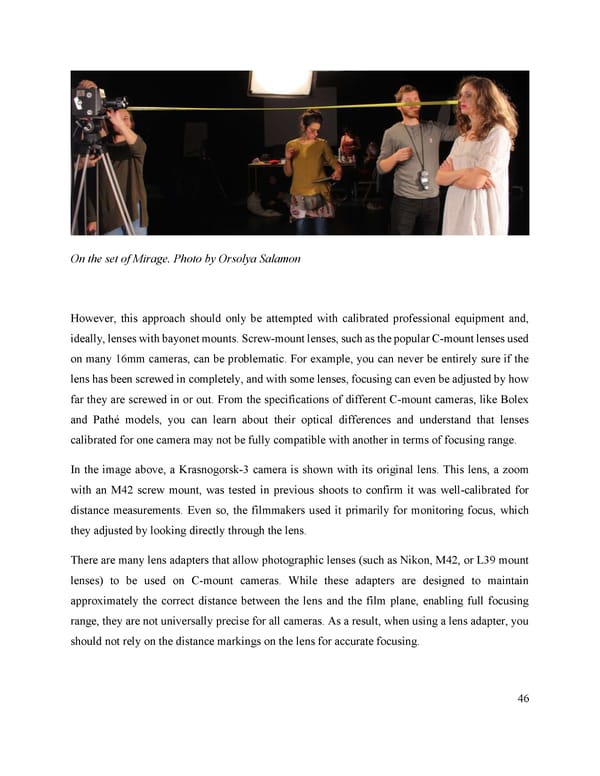On the set of Mirage. Photo by Orsolya Salamon However, this approach should only be attempted with calibrated professional equipment and, ideally, lenses with bayonet mounts. Screw-mount lenses, such as the popular C-mount lenses used on many 16mm cameras, can be problematic. For example, you can never be entirely sure if the lens has been screwed in completely, and with some lenses, focusing can even be adjusted by how far they are screwed in or out. From the specifications of different C-mount cameras, like Bolex and Pathé models, you can learn about their optical differences and understand that lenses calibrated for one camera may not be fully compatible with another in terms of focusing range. In the image above, a Krasnogorsk-3 camera is shown with its original lens. This lens, a zoom with an M42 screw mount, was tested in previous shoots to confirm it was well-calibrated for distance measurements. Even so, the filmmakers used it primarily for monitoring focus, which they adjusted by looking directly through the lens. There are many lens adapters that allow photographic lenses (such as Nikon, M42, or L39 mount lenses) to be used on C-mount cameras. While these adapters are designed to maintain approximately the correct distance between the lens and the film plane, enabling full focusing range, they are not universally precise for all cameras. As a result, when using a lens adapter, you should not rely on the distance markings on the lens for accurate focusing. 46
 Lost Analogue: Exploring Film, Music, and Interdisciplinary Methods in Education Page 46 Page 48
Lost Analogue: Exploring Film, Music, and Interdisciplinary Methods in Education Page 46 Page 48